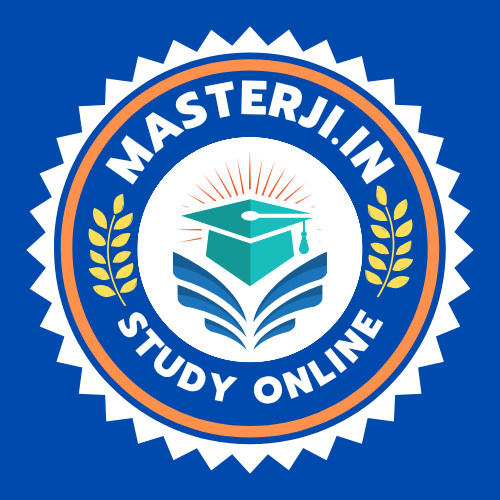Q.1. The two accounts that you read above are based in two distant cultures. What is the commonality of theme found in both of them?
Q.1. आपने जो दो कहानियाँ पढ़ीं, वे दो अलग-अलग संस्कृतियों की हैं। इन दोनों में कौन-सी समान विषय-वस्तु (थीम) मिलती है?
Answer / उत्तर:
Both stories show discrimination and injustice—one due to race and the other due to caste. Both girls fight for self-respect and equality.
दोनों कहानियाँ भेदभाव और अन्याय को दिखाती हैं—एक नस्ल के कारण और दूसरी जाति के कारण। दोनों लड़कियाँ आत्म-सम्मान और समानता के लिए संघर्ष करती हैं।
Q.2. It may take a long time for oppression to be resisted, but the seeds of rebellion are sowed early in life. Do you agree that injustice in any form cannot escape being noticed even by children?
Q.2. अत्याचार का विरोध भले ही देर से हो, लेकिन विरोध के बीज बचपन में ही बो दिए जाते हैं। क्या आप मानते हैं कि बच्चे भी किसी भी प्रकार के अन्याय को पहचान लेते हैं?
Answer / उत्तर:
Yes, children notice injustice clearly. Both Zitkala-Sa and Bama experienced it in childhood, which led to anger and resistance.
हाँ, बच्चे अन्याय को जल्दी समझ लेते हैं। जितकाला-सा और बामा ने बचपन में ही इसे महसूस किया और उनके मन में विरोध की भावना आई।
Q.3. Bama’s experience is that of a victim of the caste system. What kind of discrimination does Zitkala-Sa’s experience depict? What are their responses to their respective situations?
Q.3. बामा जातिव्यवस्था की शिकार हैं। जितकाला-सा को किस तरह का भेदभाव सहना पड़ा? दोनों ने अपने हालात का सामना कैसे किया?
Answer / उत्तर:
Bama faced caste discrimination, while Zitkala-Sa faced racial bias. Bama chose education, and Zitkala-Sa used writing to protest.
बामा को जातिगत भेदभाव, और जितकाला-सा को नस्लीय भेदभाव झेलना पड़ा। बामा ने शिक्षा को हथियार बनाया, और जितकाला-सा ने लेखन के जरिए विरोध किया।
Q4: What are the two parts of “Memories of Childhood”?
(“मेमोरीज ऑफ चाइल्डहुड” के दो भाग कौन से हैं?)
Ans. The two parts are:
- “The Cutting of My Long Hair” by Zitkala-Sa, which describes her experiences as a Native American girl in a white-dominated school.
- “We Too Are Human Beings” by Bama, which describes her experiences with caste discrimination in India.
(पहला भाग “द कटिंग ऑफ माई लॉन्ग हेयर” ज़िटकाला-सा द्वारा है, जो एक मूल अमेरिकी लड़की के स्कूल के अनुभव को दर्शाता है।
दूसरा भाग “वी टू आर ह्यूमन बीइंग्स” बामा द्वारा है, जो भारत में जाति भेदभाव के उनके अनुभव को बताता है।)
Q5: What was Zitkala-Sa’s reaction to the cutting of her hair?
(ज़िटकाला-सा ने अपने बाल काटे जाने पर कैसी प्रतिक्रिया दी?)
Ans. She resisted, cried, and hid under a bed, but was forcibly caught and her long hair was cut.
(उसने विरोध किया, रोई और बिस्तर के नीचे छिप गई, लेकिन उसे जबरदस्ती पकड़कर उसके लंबे बाल काट दिए गए।)
Q6: How did Bama feel after seeing the elder carrying food like that?
(बामा ने जब बुजुर्ग को इस तरह खाना ले जाते देखा तो उन्हें कैसा लगा?)
Ans. She felt shocked, angry, and humiliated at the caste discrimination in society.
(उन्होंने समाज में जातिगत भेदभाव को देखकर सदमे, गुस्से और अपमान का अनुभव किया।)
Q7: How did education help Bama?
(शिक्षा ने बामा की कैसे मदद की?)
Ans. Education helped Bama become aware of caste discrimination and fight against it.
(शिक्षा ने बामा को जातिगत भेदभाव के बारे में जागरूक किया और इसके खिलाफ लड़ने में मदद की।)
Q8: What message does “Memories of Childhood” convey?
(“मेमोरीज ऑफ चाइल्डहुड” क्या संदेश देती है?)
Ans. It conveys the message that discrimination, whether based on race or caste, is unjust, and education is a powerful tool to fight it.
(यह संदेश देती है कि भेदभाव, चाहे नस्लीय हो या जातिगत, अन्यायपूर्ण है और शिक्षा इसके खिलाफ लड़ने का एक शक्तिशाली हथियार है।)
